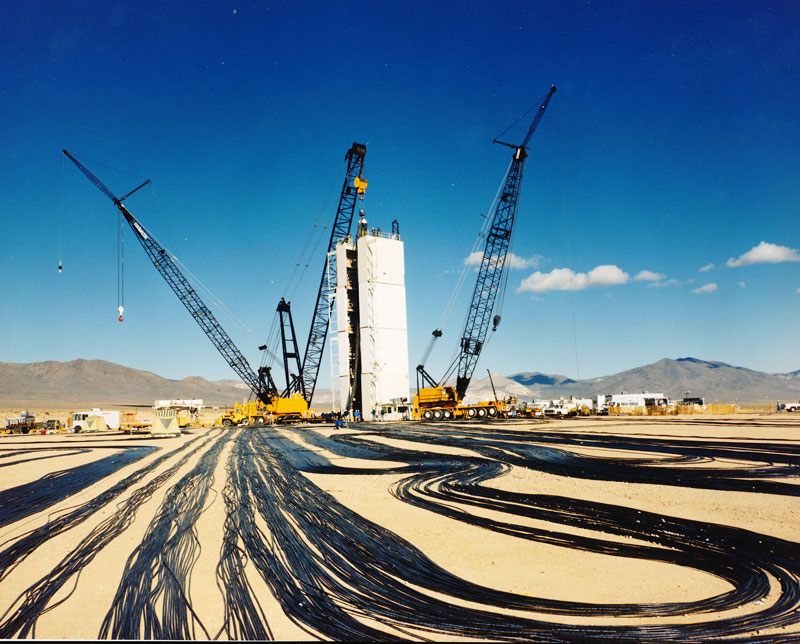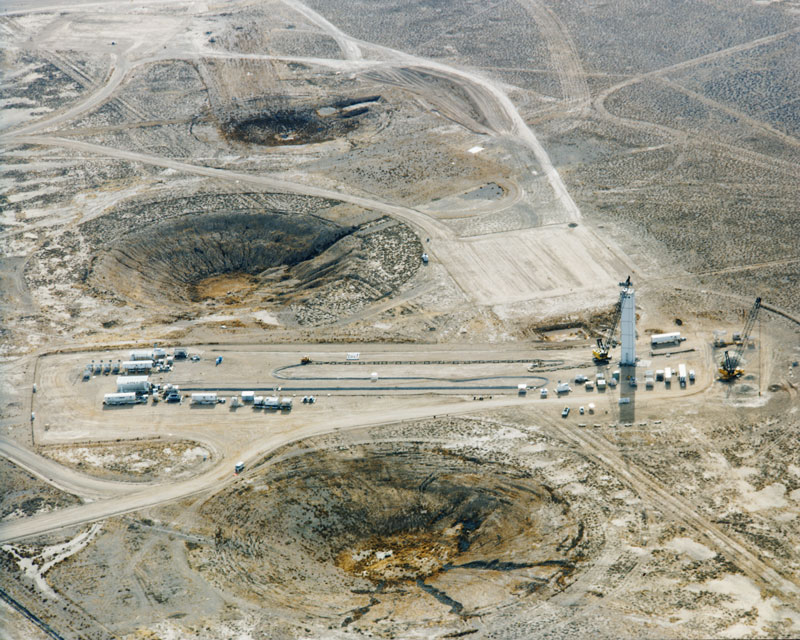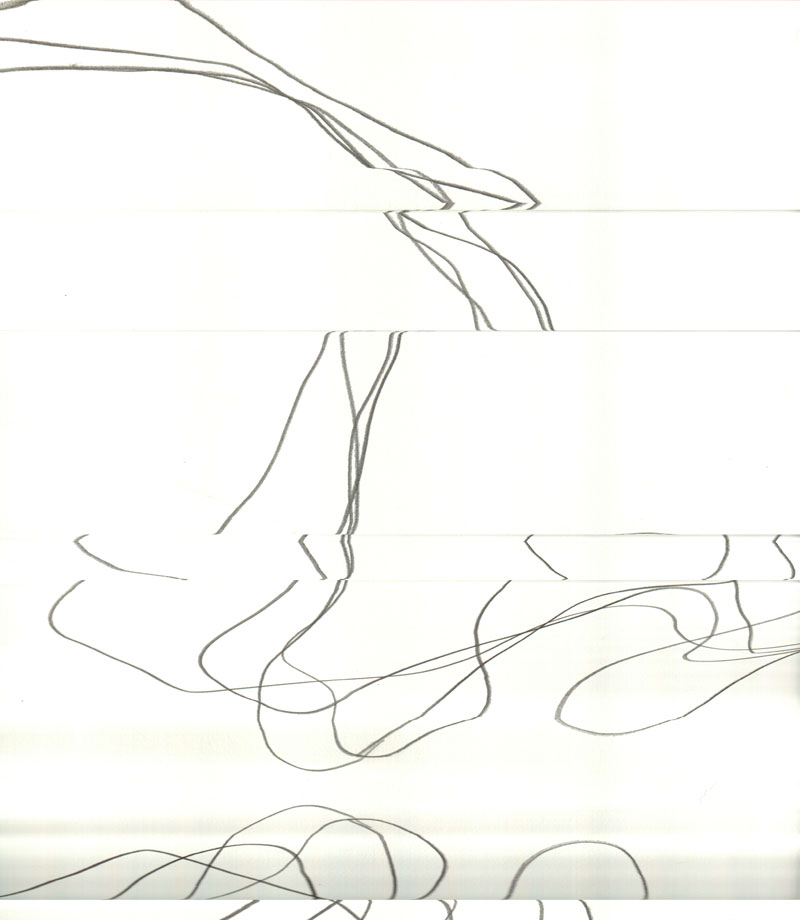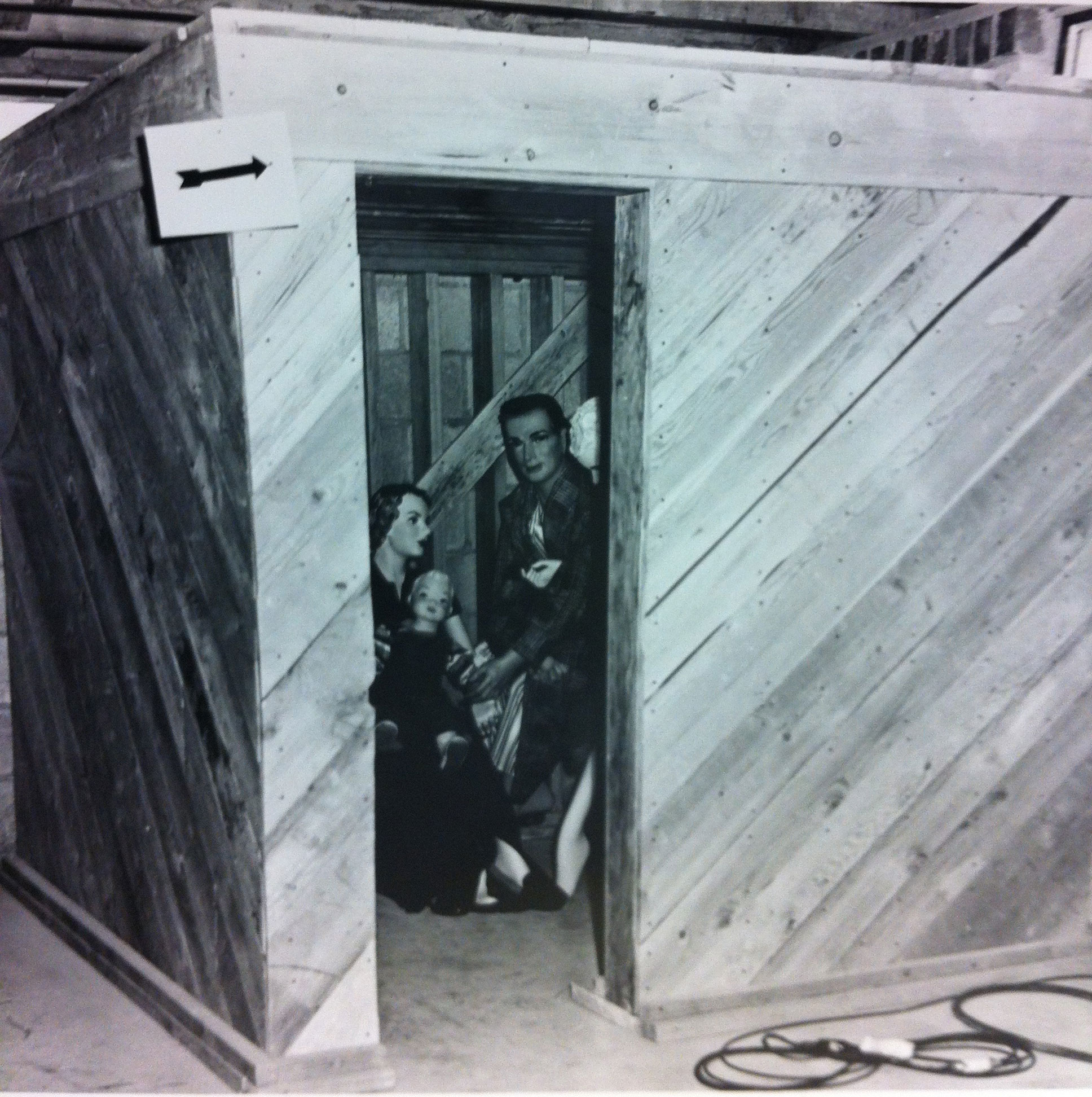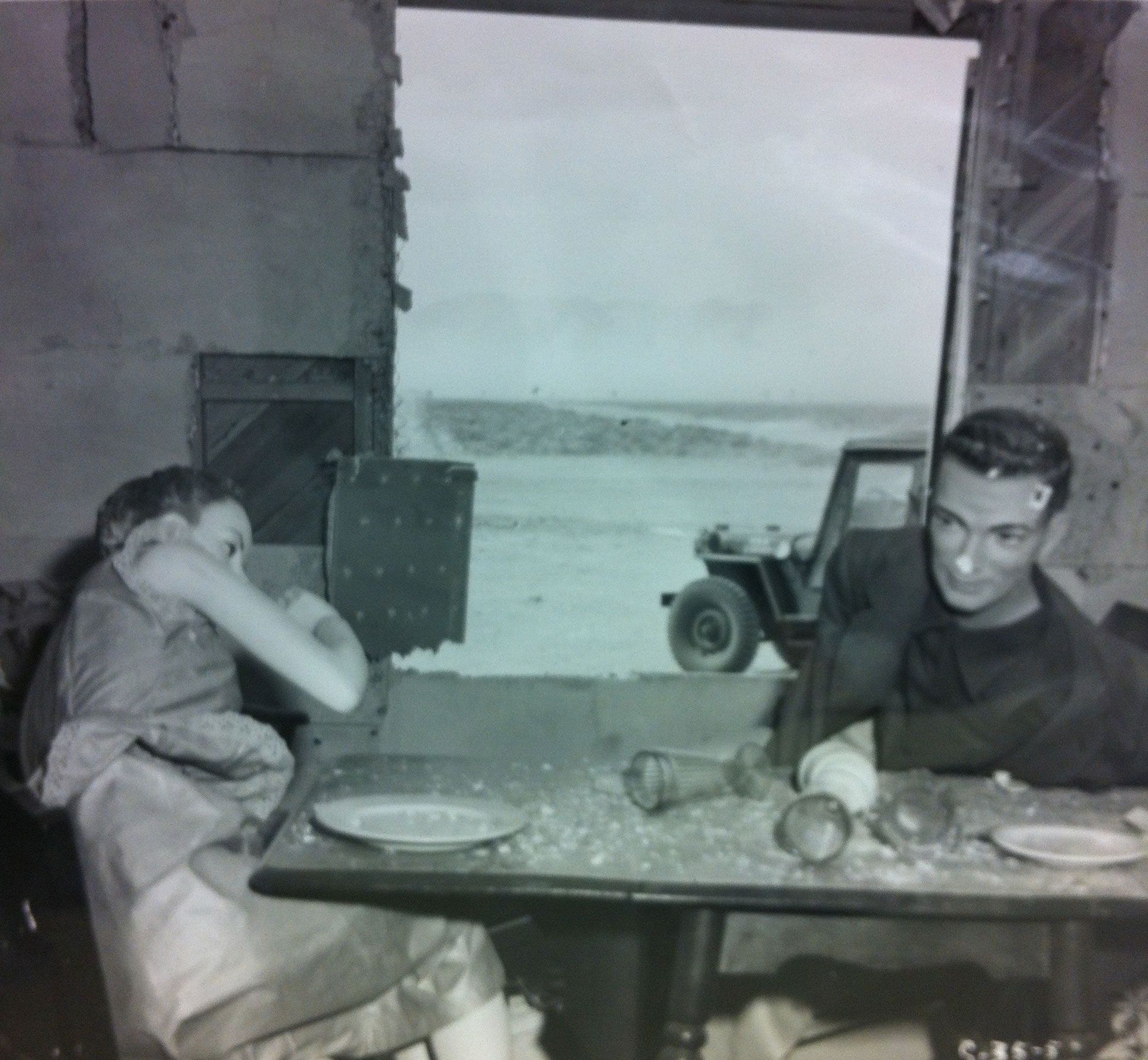
With about twenty-five other visitors, I rode out to the Nevada Test Site on Thursday, December 13. (The Nevada Test Site now goes by the name: Nevada National Security Site.) Our full-day tour was led by Ernie Williams, a former Atomic Energy Commission employee and, at the age of 82, a participant and witness to most U.S. nuclear testing activity.
No pictures, no recording, no cellphones, no video allowed. While we drove around I noted the cable lines strewn about, the few subsidence craters I could see out the window, towers and other testing equipment that stands in ruin, the houses from the 1950s that, situated furthest from ground zero, remain as empty shells, and other evidence of experiments conducted.
We were allowed off the bus at two spots within the site: in Frenchman Flat to stand underneath a warped steel bridge (damaged by the force of an early atmospheric nuclear test), and, later that afternoon in northern Yucca Flat, where we stood at the dramatic edge to Sedan Crater. It was a rainy and snowy day with little visibility. I was a little sad to have missed the view of mountains that surround the valley. From my 2008 visit I remember the feeling of vastness in the valley, and the feeling like we were inside a place. While mountains encircle Yucca Flat and there is a natural feeling of enclosure, the fact that it is a highly restricted area probably contributes to that impression.
Sedan Crater
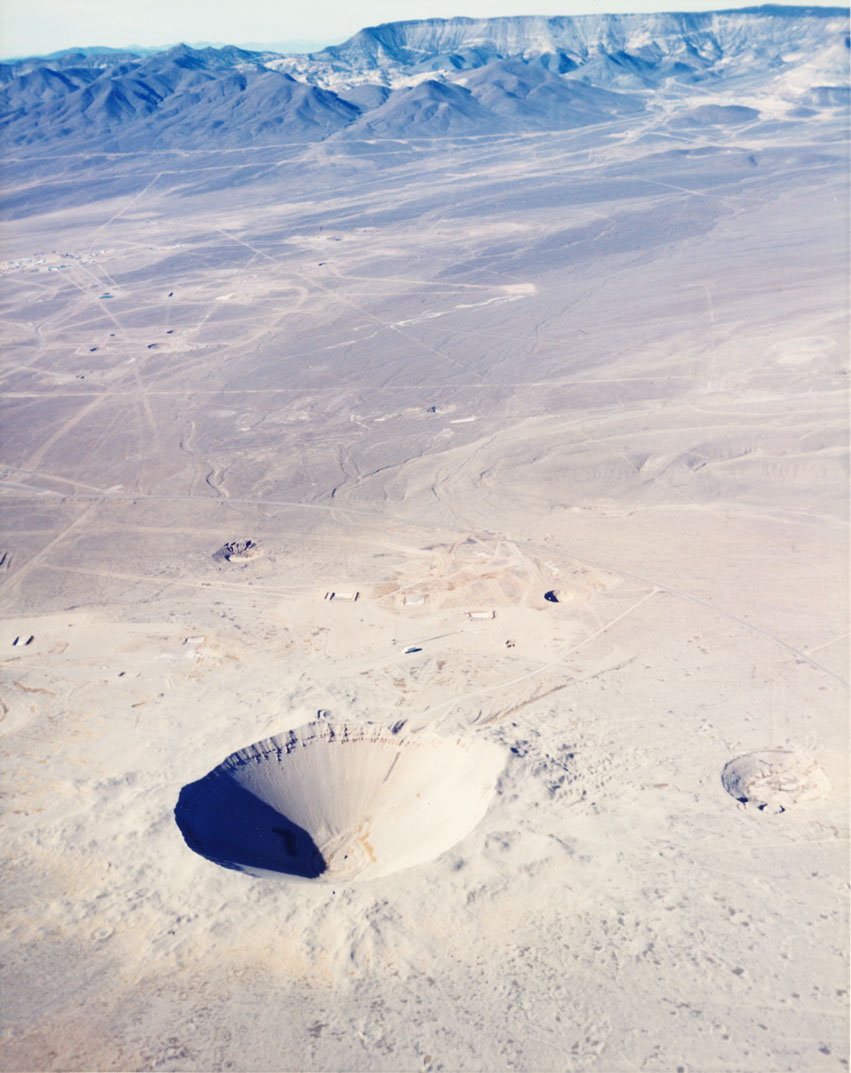
(Images courtesy of the University of Nevada Las Vegas Special Collections, DOE Collection.)
















